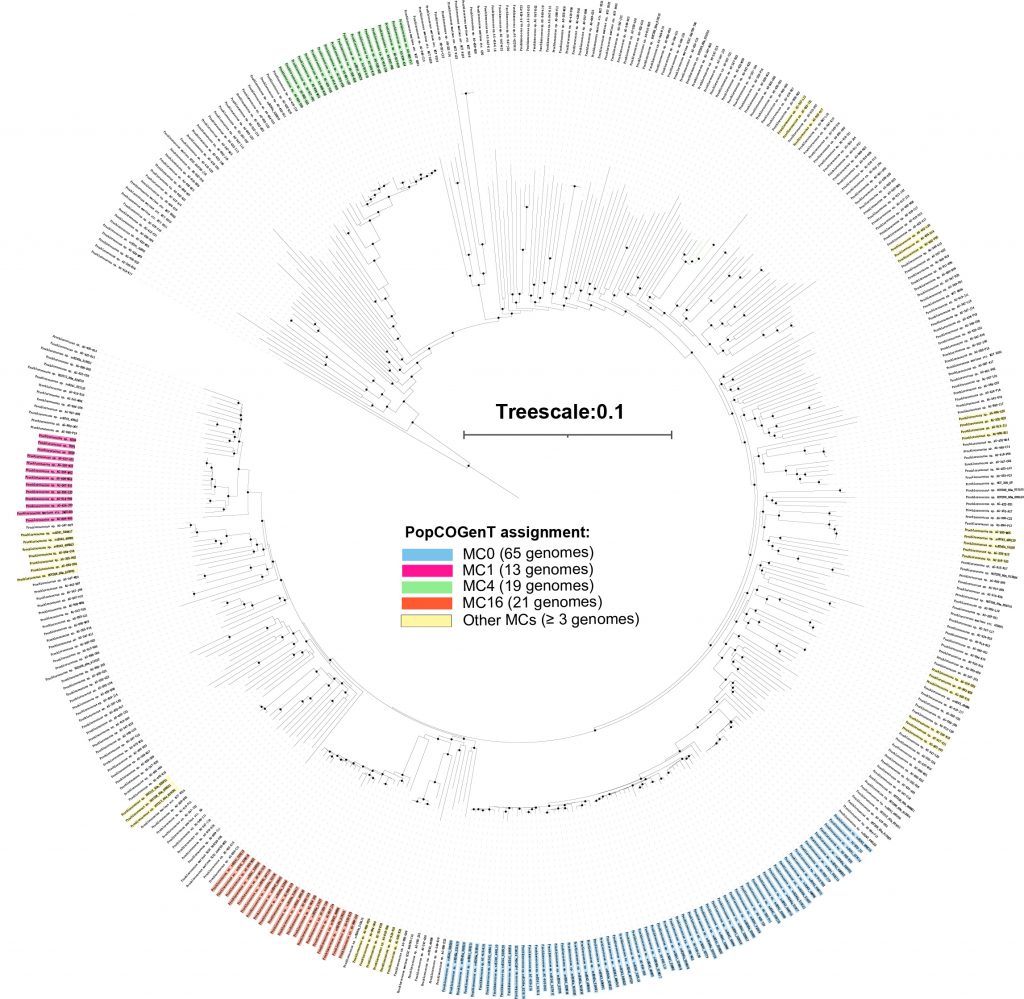CUHK
News Centre
CUHK scientists discover the key force in the evolution of tiny marine bacteria for a new understanding of its work efficiency in fixing carbon dioxide
Biological evolution theories posit that a tiny marine bacterium with the scientific name of Prochlorococcus has an unusually large population size and thus natural selection is an extremely efficient driver of their evolution. However, a collaborative team led by Professor Haiwei LUO in the School of Life Sciences at The Chinese University of Hong Kong (CUHK) rejects this theory and discovered that genetic drift is a key force in Prochlorococcus evolution. Their study implies that the work efficiency of biogeochemical cycles mediated by Prochlorococcus may not be as efficient as expected, which has implications for climate regulation. The findings have recently been published in the internationally leading journal Nature Ecology & Evolution.
Approximately 15% of the oxygen we breathe in is released by Prochlorococcus, a carbon-fixing photosynthetic bacterial group that lives in the tropical and subtropical oceans. Microbes represent 90% of the biomass in the ocean and a few dominant groups comprise a majority of the marine microbial cells. Prochlorococcus is one of them and is Earth’s most abundant photosynthetic organism that use sunlight to power the fixation of carbon dioxide and the production of organic matter and oxygen.
“Genetic drift” is an evolutionary force resembling a random sampling effect that results in chances of deletion of beneficial traits and retention of deleterious variants. It acts in any biological species including humans and Prochlorococcus. The difference is that genetic drift is very powerful in humans but was believed to have a negligibly small effect on Prochlorococcus because the power of genetic drift scales negatively with “effective population size”. On the contrary, the efficiency of natural selection scales positively. Scientific communities believed that Prochlorococcus species have an unusually large effective population size ranging from 1 to 10,000 billion, which is greater than any known biological species. Therefore, natural selection has been presumed to be extremely efficient and genetic drift negligible during their evolution.
Professor Luo and the team tested this hypothesis. They measured the spontaneous mutation rate of a representative Prochlorococcus strain using a large-scale mutation accumulation experiment that spanned over three years. A new computational strategy was also developed to distinguish closely related but distinct species by using over 400 partial genomes of uncultivated Prochlorococcus cells. Based on these data, the team discovered that the effective population size of Prochlorococcus species is 10 million, which is far smaller than previously thought.
Professor Luo explained, “Given the unexpectedly small effective population size, genetic drift should be considered as a key force in Prochlorococcus evolution. Therefore, scientists should no longer consider the Prochlorococcus genomes as a repertoire of metabolic traits that are fully optimised by natural selection. They should treat it instead as a genetic pool in which the relevant enzymes they encode are likely embedded with excessive harmful mutations. The study has important implications for understanding the work efficiency of biogeochemical cycles mediated by Prochlorococcus, particularly in carbon fixation and nutrient cycling. For example, if enzymes that help fix carbon dioxide carry many harmful mutations, the fixation process may not be as efficient as expected. Given the global dominance of Prochlorococcus, the compromised efficiency may affect the climate regulation and the balance of the Earth’s elemental cycle.”
Other team members include Professor Luo’s PhD student Xiaojun WANG, Professor Yao ZHANG and her PhD student Zhuoyu CHEN from Xiamen University and Professor Qinglu ZENG from The Hong Kong University of Science and Technology. This work is supported by the Hong Kong Branch of Southern Marine Science and Engineering Guangdong Laboratory (Guangzhou) and the Areas of Excellence Scheme under the Hong Kong Research Grants Council. The full text of the research paper can be found at: https://rdcu.be/cDLSh.
About the CUHK Microbial Evolution and Ecology Laboratory
The CUHK Microbial Evolution and Ecology Laboratory was established in 2015 by Professor Haiwei LUO, focusing on evolutionary genetics and population genomics of bacterial lineages that are relevant to biogeochemical cycles of carbon and nitrogen, coral conservation, and crop productivity. The laboratory has produced multiple breakthrough results including developing new methods to estimate the antiquity of bacterial groups, correlating bacterial evolution with the host evolution and the planet Earth evolution, discovering new mechanisms of bacterial speciation, and revisiting the role of natural selection in bacterial adaptive evolution.








